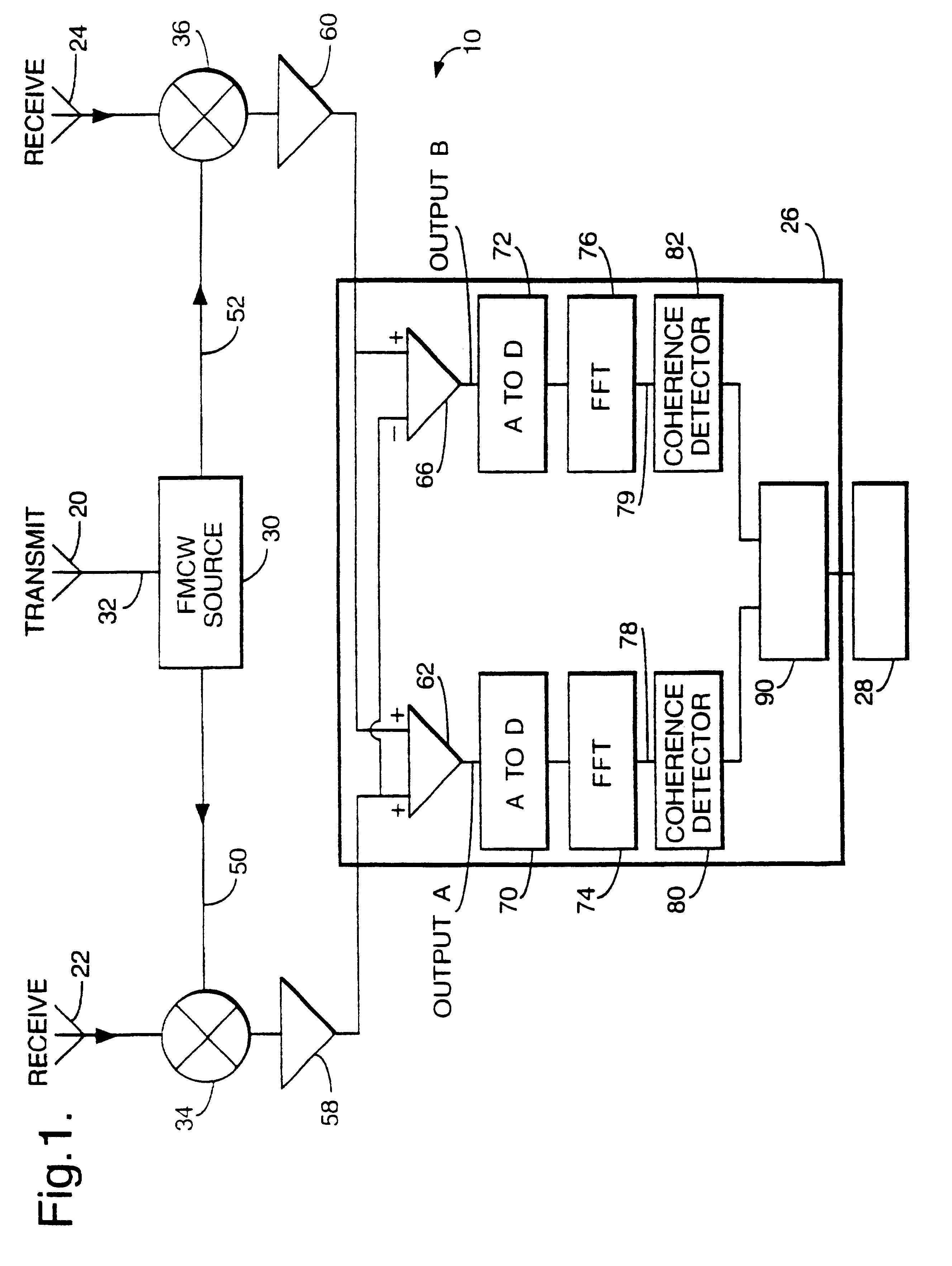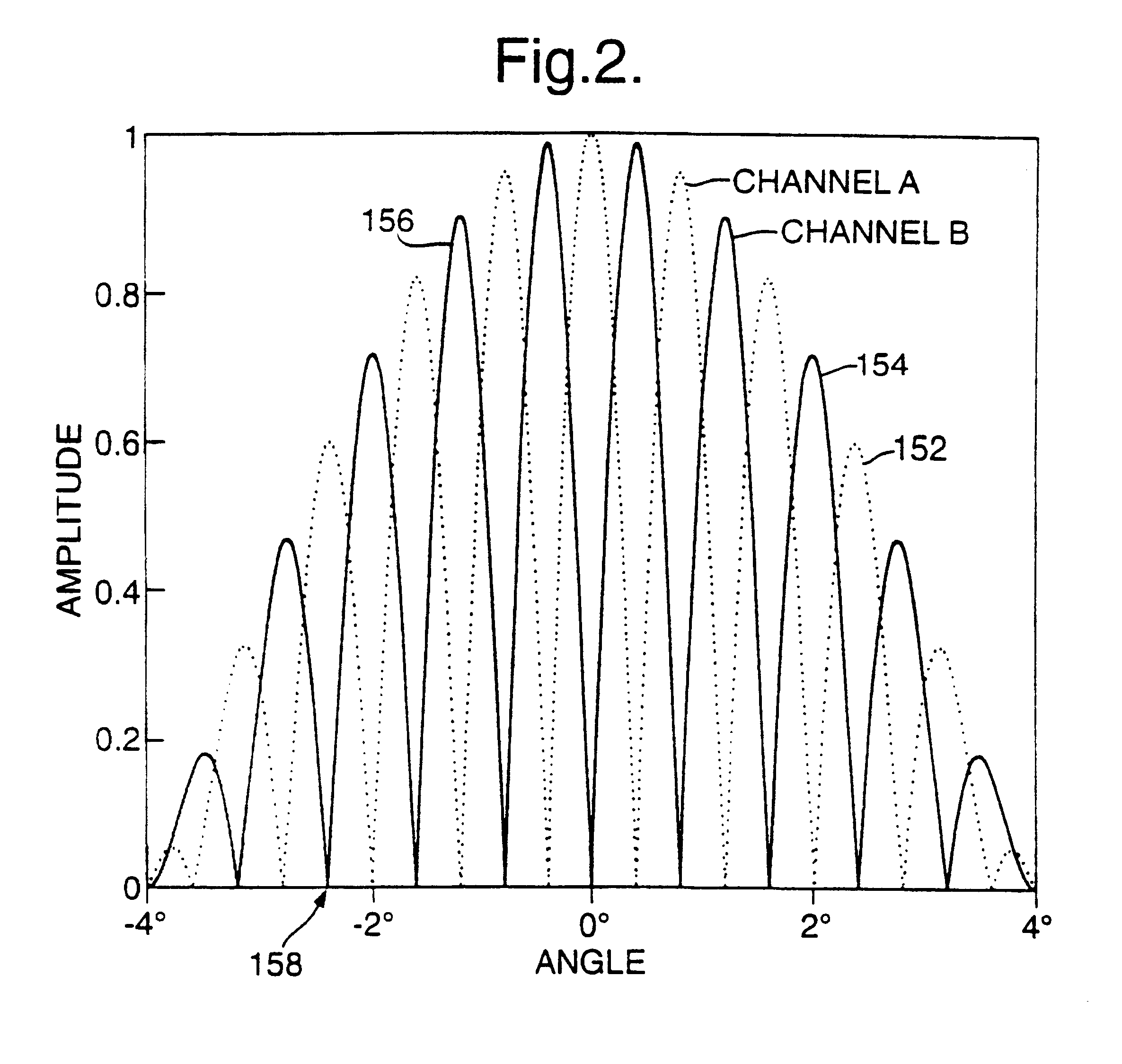Collision warning system
- Summary
- Abstract
- Description
- Claims
- Application Information
AI Technical Summary
Benefits of technology
Problems solved by technology
Method used
Image
Examples
Embodiment Construction
Referring to FIG. 1 there is shown a collision warning radar system indicated generally by 10 which would be mounted on a vehicle. The system 10 includes a microwave transmit antenna 20, two microwave receive antennas 22 and 24, and a signal processor 26 connected to a warning buzzer 28. The microwave transmit antenna 20 is a conventional waveguide horn emitting microwave radiation having a frequency in the range 76 to 77 GHz. The transmit antenna 20 produces a radar beam which is 10.degree. wide in azimuth. The radar beam is a transmitted signal which is a single sweep linear frequency modulated continuous wave (FMCW) signal, as described by Stove in the previously referenced article. The FMCW signal is generated by a source 30 and passed to the transmit antenna 20 via a transmission line 32. The receive antennas 22 and 24 are separated laterally by a distance of 1.2 meters and are each a horn type antenna having an angle of sensitivity of 10.degree. to match the beamwidth of the t...
PUM
 Login to View More
Login to View More Abstract
Description
Claims
Application Information
 Login to View More
Login to View More - R&D
- Intellectual Property
- Life Sciences
- Materials
- Tech Scout
- Unparalleled Data Quality
- Higher Quality Content
- 60% Fewer Hallucinations
Browse by: Latest US Patents, China's latest patents, Technical Efficacy Thesaurus, Application Domain, Technology Topic, Popular Technical Reports.
© 2025 PatSnap. All rights reserved.Legal|Privacy policy|Modern Slavery Act Transparency Statement|Sitemap|About US| Contact US: help@patsnap.com



